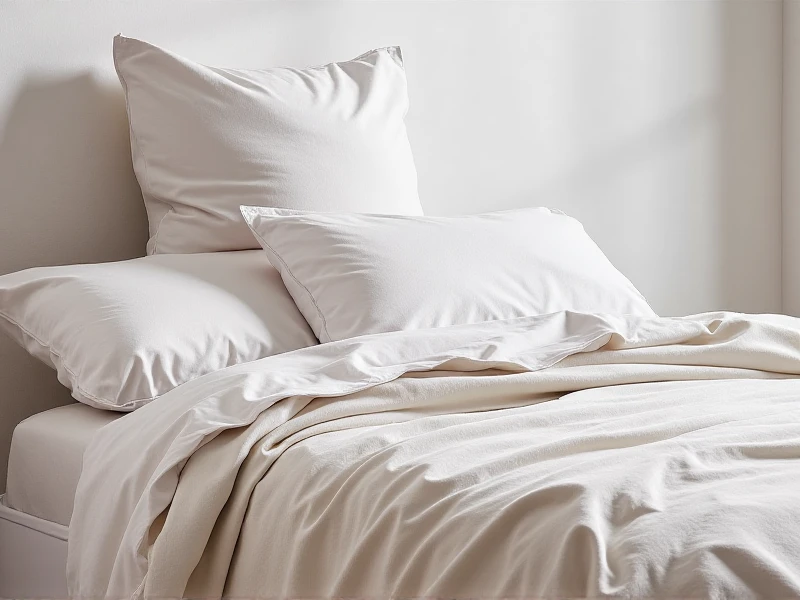Textiles: Ancient Threads Weaving Our Modern World
2025-06-04

For over 34,000 years, humans have manipulated fibers into textiles – a fundamental technology shaping civilizations, cultures, and our daily lives. More than mere cloth, textiles represent innovation, artistry, and an enduring connection between our past and our evolving future. They insulate us, adorn us, define spaces, and constantly push the boundaries of material science.
From Humble Beginnings to Global Industry
The story of textiles begins with primal needs: warmth and protection. Early humans utilized animal skins, then progressed to braiding plant fibers. Archaeological evidence points to flax being used for linen in ancient Egypt around 36,000 BCE, while wool from sheep became crucial across Eurasia. The ingenious inventions of the spindle for spinning and the loom for weaving dramatically increased production efficiency and fabric complexity.
Centuries of trade, exploration, and colonial expansion intertwined global textile traditions – silk routes connecting China and Europe, Indian cotton coveted worldwide, intricate tapestries narrating European history, vibrant African Kente cloth signifying status. The Industrial Revolution marked another massive shift, automating spinning and weaving with machines like the Spinning Jenny and the Power Loom, moving production from artisan homes to factories and radically altering economies and societies. This evolution solidified textiles not just as necessity, but as the cornerstone of early global trade and industrial might.
Beyond Aesthetics: The Deep Importance of Textiles
Textiles permeate almost every facet of existence:
1. Essential Utility: Clothing provides protection from the elements. Home textiles (bedding, curtains, towels, rugs) offer comfort, insulation (thermal and acoustic), and define our living environment. Technical textiles serve critical functions like vehicle airbags, medical sutures, geotextiles preventing erosion, and protective gear for firefighters or astronauts.
2. Economic Powerhouse: The global textile industry remains colossal, encompassing everything from raw fiber production (cotton, wool, synthetics) to complex garment manufacturing, design houses, and retail giants. Millions find livelihoods within this vast, interconnected chain.
3. Cultural Tapestry: Textiles are intrinsic to cultural identity. Traditional garments, weaving patterns, dyeing techniques, and embroidery styles preserve centuries-old heritage and signify community, status, and belief systems. They are living art forms passed down through generations.
4. Driving Material Science: The demand for better performance — stronger, lighter, warmer, cooler, more durable, smarter — pushes constant innovation. Synthetic fibers (nylon, polyester, Kevlar), microfibers, and high-tech finishes are testament to research and development focused on textiles.
The Sustainability Imperative in Modern Textiles
Today's textile industry faces significant scrutiny regarding its environmental footprint. Challenges include:
Resource Intensity: Conventional cotton farming is notoriously thirsty and pesticide-heavy. Synthetics rely on finite petrochemicals.
Polyester Proliferation & Microplastics: Cheap synthetic fibers dominate, linked to fossil fuels and shedding microplastics during washing, polluting waterways and oceans.
Waste Generation: Fast fashion models lead to mountains of discarded clothing, much ending up in landfills or being incinerated globally.
Chemical Pollution: Dyeing and finishing processes can involve toxic chemicals impacting water sources and workers' health.
The movement towards sustainable textiles is gaining critical momentum, focusing on:
Regenerative Raw Materials: Organic cotton, linen, hemp, and Tencel™ (Lyocell) from sustainably managed wood sources. Innovations in recycled fibers (from post-consumer plastic bottles or textile waste like Renewcell®).
Resource-Efficient Processes: Waterless dyeing technologies, closed-loop systems minimizing chemical discharge, energy-efficient manufacturing. Companies like DyeCoo lead the way.
Circular Economy Models: Emphasizing durability, repairability, reuse schemes (rental/resale), and recycling technologies to keep textiles in use and out of landfills. Initiatives like the Ellen MacArthur Foundation's "Jeans Redesign" project exemplify this shift.
Transparency & Ethics: Increased demand for supply chain visibility ensuring fair labor practices and ethical sourcing (Fair Trade, B Corp certifications). Consumers drive this by seeking greater accountability.
The Future is Smart and Functional
Beyond sustainability, the next frontier is smart and functional textiles. Integrating technology transforms fabrics into interactive interfaces and active components:
Health & Wellness: Wearables that monitor vital signs (heart rate, temperature, muscle activity), compression garments aiding recovery, antimicrobial fabrics.
Enhanced Performance: Phase-change materials regulating temperature, fabrics generating power from solar or kinetic energy, military uniforms detecting threats or changing camouflage.
Connectivity & Interaction: Textiles incorporating sensors, conductive yarns enabling touch interfaces within clothing or upholstery.
Choosing Mindfully: Textiles Impact Lives
Every textile product purchase holds weight. Opting for natural fibers like organic cotton, linen, or hemp significantly reduces synthetic microplastic pollution and pesticide use. Seeking out recycled content minimizes virgin resource extraction. Prioritizing certifications (GOTS – Global Organic Textile Standard, Oeko-Tex® Standard 100, Fairtrade) provides assurance on environmental practices and labor conditions. Ultimately, choosing durable, well-made items designed for longevity counters the throw-away culture. Repairing and upcycling existing textiles extends their lifecycle value.
Textiles: An Enduring Legacy
Textiles are far more than the fabric covering our bodies or furnishing our homes. They are threads woven into human ingenuity, cultural expression, economic systems, and technological advancement. As we navigate the environmental challenges and harness the potential of biomaterials and smart textiles, their story continues to unfold. Embracing sustainable practices and innovative technologies ensures that this ancient art and essential science remains a vibrant, responsible, and integral part of shaping our future world. The choices we make, from material sourcing to how we care for and dispose of textiles, directly influence the health of our planet and define the legacy we leave behind. Understanding textiles empowers mindful selection and appreciation for the intricate role they play in the tapestry of human existence.
Category: